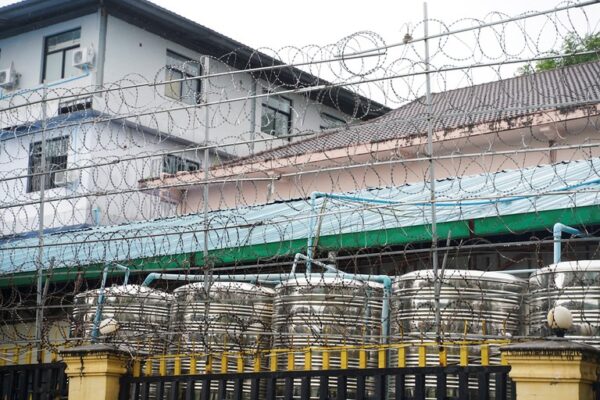
The BRI Status: A Grand Report on Its Present and Future
Download the report: Link The Chinese government introduced the Belt and Road Initiative (BRI), a global infrastructure development initiative in 2013. The plan aims to connect Asia, Africa, and Europe with a network of roads, trains, ports, and other infrastructure. The BRI got acclaim from the Chinese government for its ability to boost connectivity and economic growth in developing countries worldwide. However, the initiative has significantly harmed the environment, placed the signatory countries under an unrestrained amount of debt (a situation known as the “debt trap“), and the projects lacked transparency. Here is a Grand report on its current status and future scope. Debt Traps When a nation borrows a large amount of money that it is unable to pay back its obligations, such a condition is known as a debt trap. This results in a variety of issues, such as political instability, economic instability, and even the loss of sovereignty. There have been several instances when it has been said that countries have fallen into debt traps as a result of BRI projects. For instance, Sri Lanka was compelled to give China control of a significant port when it was unable to pay its debts. The BRI has been criticized for its lack of transparency. There is little information available about the costs and benefits of the BRI projects, and there have been allegations of corruption in some of the deals. This makes it difficult to assess the true risks of the BRI for developing countries. The Growth of BRI According to our investigation, 62.8% of the countries that have joined the BRI are developing countries, while around 17% are developed countries. This suggests that the BRI is primarily focused on developing countries. This is likely because developing countries have a greater need for infrastructure investment than developed countries. Developing countries often have a need for loans to finance infrastructure projects. The BRI offers these countries an opportunity to access Chinese loans. However, there is a risk that these loans could lead to debt traps as discussed in the previous section. Politicians’ hunger in developing and upper-middle-income economies for Chinese loans and subsequent inability to repay them has hurt the entire political and economic stability of countries like Sri Lanka, Pakistan, Nepal, Ethiopia, and Congo! Our analysis also shows that of the BRI member countries, parliamentary democracies make up 30%, presidential republics make up 25.3%, and countries with a presidential system (not republics) make up 18.7%. This suggests that the BRI is not limited to any particular type of government. Countries whose political parties competed with one another were more likely to join the BRI. This is because leaders in these countries, like those in Kenya, are more likely to be enticed by hefty Chinese loans, as the loan terms and their future implications are typically kept secret from the public. If we talk about the continents, 27% of the nations that have joined the BRI are in Asia and 33.1% are in Africa. Resources like cobalt, diamonds, platinum, and uranium are abundant in most of the African nations that make up the BRI. In addition to plundering resources from these areas, Chinese corporations often lock fragile nations in vicious loan cycles. China lures nations in Asia not just for its financial prospects but also for geopolitical and strategic upsides. Countries like Nepal, Sri Lanka, and Pakistan join BRI in order to gain political favor, access to quick loans, and the benefit of being associated with the second-largest economy in the world. But after ten years, BRI’s impact on these nations has only recently become apparent. This has been thoroughly explored in this report. In-depth Analysis of BRI Here is an in-depth analysis of some of the countries/regions which have suffered due to the Belt and Road Initiative (BRI): Conclusion In conclusion, the report titled “The BRI Status: A Grand Report on Its Present and Future” sheds light on the numerous challenges and issues faced by BRI projects in developing and least-developed countries of Asia and Africa. The findings indicate that these projects have experienced cost overruns, corruption, environmental damage, funding issues, repeated delays, lack of progress, and poor quality of development. Specific cases highlighted in the report further illustrate the negative consequences of these issues. For instance, the Bagamoyo Port Project in Tanzania was halted due to concerns that the terms of the project compromised the country’s sovereignty. Similarly, in Nepal, all BRI projects experienced significant delays, with more than half suffering from corruption and poor quality. Furthermore, it is evident that in countries like Nepal and Sri Lanka, some BRI projects seem to serve China’s geopolitical interests rather than contributing to regional development. This raises questions about the true motivations behind these investments. The report also reveals security concerns raised by stakeholders involved in BRI projects in Pakistan, with a significant number of projects experiencing cost overruns. Examples such as the Hambantota port lease in Sri Lanka for 99 years to China Merchants Port Holdings further highlight the long-term implications of such agreements. Looking ahead, it is crucial to address these issues and ensure that BRI projects prioritize sustainable development, transparency, and accountability. Lessons from the past should guide future decisions, with a focus on mutually beneficial partnerships that genuinely contribute to the socioeconomic progress of the host countries. By recognizing the challenges and learning from the shortcomings, it is possible to shape a more positive and inclusive future for the Belt and Road Initiative, where the interests of all stakeholders are safeguarded and the potential for sustainable development is fully realized.










